Understanding Your Climate
A. Know Your Hardiness Zone
Creating a thriving spring garden in warm climates begins with understanding your USDA hardiness zone. These zones categorize regions based on minimum winter temperatures, helping you determine which plants are best suited for your area. For instance, gardeners in zones 9 and 10 enjoy mild winters and hot summers, providing an opportunity to cultivate a variety of species throughout the year.
By focusing on plants appropriate for your specific zone, you maximize growth potential and longevity. Incorporating plants like the Adonidia Palm Double ensures that your garden will not only survive but thrive throughout the warmer months.
B. Seasonal Considerations
Warm climates often mean an extended growing season, which is both a blessing and a challenge. To take full advantage, consider the timing of your plantings. Many gardeners in warmer areas can start their spring planting earlier than those in cooler regions. It's essential to manage watering schedules as temperatures rise, ensuring that plants such as the heat-tolerant Agave Caribbean Agave Angustifolia remain hydrated.
Selecting the Right Plants
A. Native and Drought-Tolerant Plants
In warm climates, native and drought-tolerant plants are particularly well-suited as they have adapted to local environmental conditions. Incorporating plants like the Agave Desmettiana Variegata can significantly reduce the need for watering and maintenance.
These plants also provide ecological benefits by supporting native wildlife and maintaining the region's biodiversity. By choosing wisely, you can create a sustainable garden that's both beautiful and responsible.
B. Highlighting Ornamental Varieties
Ornamental plants can transform any garden into a vibrant oasis. Options like the Adonidia Palm Triple bring a tropical touch, while flowering plants such as the Agapanthus Lily of the Nile Blue add a splash of color that can brighten any space.
Mixing plants with varied textures and shapes creates contrast and interest. Utilize plants with different blooming cycles to ensure your garden remains lively from early spring through late summer.

Designing Your Garden Layout
A. Understanding Microclimates
Microclimates within your garden can affect plant growth, requiring astute planning. Hot, sun-drenched areas may suit succulents, whereas shaded spots could be ideal for foliage plants like the Aglaonema Silver Bay. By observing how sunlight moves through your garden, you can strategically place plants to enhance their beauty and growth potential.
B. Creating Focal Points and Pathways
The design of your spring garden in a warm climate should include striking focal points. Tall plants such as the Alexander Palm can serve as stunning vertical features. Define pathways with materials that reflect the sun, such as light-colored gravel or pavers, to keep them cooler.
These elements not only enhance navigation through your garden but also contribute to its overall aesthetic appeal. Consider incorporating water features or statues for added interest and cooling effects.
Preparing the Soil
A. Soil Testing and Amendments
Successful gardening begins with healthy soil. Conducting a soil test helps identify nutrient deficiencies and pH imbalances. Once you understand your soil's composition, you can add necessary amendments such as compost, peat, or lime to improve its quality.

Soil that retains moisture while providing adequate drainage supports healthy root systems and robust plant growth. By preparing the soil properly, you set the stage for a flourishing garden throughout the season.
B. Mulching for Moisture Retention
In warm climates, retaining soil moisture is critical. Mulching not only conserves moisture but also helps regulate temperatures, suppresses weed growth, and enriches the soil. Organic mulches like wood chips or straw break down over time, providing additional nutrients.
Apply a generous layer of mulch around your plants, ensuring it doesn't touch the stems, to create a thriving microenvironment beneath the surface.
Planting Techniques for Success
A. Timing and Spacing
Timing is crucial when planting in warm climates. Be mindful of the temperature requirements and growth habits of each species. For instance, begin planting hardy perennials earlier in spring, while saving tender annuals for later in the season.
Proper spacing promotes air circulation, reduces competition for resources, and minimizes the spread of disease. Make sure to arrange plants thoughtfully, allowing mature plants ample room to reach their full potential.
B. Watering Strategies
Watering can be particularly challenging in warm climates due to higher evaporation rates. Implement an efficient watering system such as drip irrigation or soaker hoses to target the root zone directly, minimizing waste.

Early morning watering reduces exposure to midday heat and allows foliage to dry before nightfall, reducing the likelihood of fungal diseases. Assess the soil moisture regularly and adjust your watering schedule accordingly to ensure optimal plant health.
Maintaining Your Spring Garden
A. Pest and Disease Management
Warm climates can attract a host of garden pests and diseases. Integrated Pest Management (IPM) strategies can help maintain balance by emphasizing the use of natural predators, mechanical controls, and organic insecticides.
Regularly inspect your plants for signs of trouble and address issues promptly. Removing affected foliage and maintaining garden cleanliness can also prevent the spread of diseases.
B. Pruning and Deadheading
Routine pruning and deadheading stimulate new growth and prolong blooming periods. Focus on removing dead or diseased stems, and spent flowers, to encourage plants like flowering shrubs and perennials to continue producing blooms.
Pruning also helps shape plants and maintain their health, allowing for better air circulation and light penetration, which enhances the overall garden environment.
Using Plantology Products
A. Elevate Your Garden with Adonidia Palms
The Adonidia Palm Single embodies the quintessential tropical look perfect for warm climates and adds vertical interest to your garden design.

These palms are easy to care for and resilient against harsh sunlight and sudden changes in temperature, making them an ideal choice for creating a lush, paradise-like atmosphere in your backyard.
B. Creating Harmony with Agave Varieties
Explore our range of agave plants like the striking Agave Blue available at Plantology to infuse your garden with sharp, architectural details.
Agaves are known for their low maintenance and water-conserving traits, making them perfect companions for a water-wise garden in a warm climate. Integrating these succulents into your landscape design will not only enhance aesthetics but also promote sustainable gardening practices.
Conclusion
Planning a spring garden in warm climates offers the unique opportunity to capitalize on a longer growing season with a diverse range of plant species. By understanding your climate, selecting appropriate plants, and employing sound design and maintenance techniques, you can create a stunning, resilient garden.
At Plantology, we're here to support your gardening endeavors with our extensive range of carefully curated products. Visit our website to discover a world of possibilities that await your spring garden. Embark on this rewarding journey and watch your garden flourish with the seasons!

Advanced Gardening Techniques
A. Companion Planting
Companion planting is an age-old gardening method where different plant species are grown together to complement each other’s growth and health. This technique can enhance pest control, promote nutrient efficiency, and improve crop productivity in your spring garden.
For instance, interplanting marigolds with vegetables like tomatoes or peppers can deter nematodes and attract pollinators. Basil is another excellent companion plant, known to improve the flavor of tomatoes and ward off pests like aphids. By strategically placing plants that benefit each other, your garden can become a harmonious ecosystem of mutual support.
Additionally, legumes like beans and peas can enrich the soil by fixing nitrogen, a crucial nutrient for leafy growth. Pairing these with nitrogen-loving plants such as corn or greens can boost overall productivity. This biodiverse approach mimics natural ecosystems, reducing reliance on chemical fertilizers and creating a more sustainable garden environment.
B. Vertical Gardening
Embracing vertical gardening is an excellent way to maximize space, particularly in smaller gardens or urban settings. Vertical structures such as trellises, arbors, and wall-mounted planters can transform even the smallest space into a lush, thriving garden.
Consider growing vining plants such as cucumbers, beans, or sweet peas that naturally climb structures. Using vertical space not only optimizes growing areas but also enhances air circulation and sunlight exposure, reducing disease incidence and improving plant health.

Moreover, vertical gardening adds aesthetic appeal, drawing the eye upwards and creating a layered visual effect. Combining flowering vines like clematis or jasmine with edible plants can create a multi-functional, beautiful space that serves both ornamental and practical purposes.
C. Raised Beds and No-Till Gardening
Raised bed gardening offers numerous benefits, especially in warm climates where soil quality and water retention might be concerns. Elevated soil warms quicker in spring, extending the growing season. Furthermore, raised beds provide better drainage and can be filled with custom soil blends to meet plant-specific needs.
No-till gardening complements this system by preserving soil structure and microorganisms. By reducing soil disturbance, you encourage natural soil processes that enhance fertility and structure. Simply top-dress with organic material like compost and let nature do the rest.
This approach minimizes erosion and nutrient leaching, supporting a dynamic, organic-rich environment for healthy, vigorous plant growth. Raised bed and no-till methods are ideal for both novice and experienced gardeners aiming for sustainability and efficiency in their gardening practices.
Integrating Water Features and Xeriscaping
A. Adding Water Features
Incorporating water features into your garden can elevate its rustic charm while providing functional benefits. For example, a small pond, fountain, or bird bath can create a refreshing atmosphere, attracting wildlife such as birds, butterflies, and beneficial insects.

Water features can also serve as natural cooling agents, lowering ambient garden temperatures during hot weather. Strategic placement of water elements can regulate microclimates within your garden, offering cooler refuge areas for plants sensitive to intense heat.
Furthermore, the sound of running water adds a tranquil, serene essence to your garden, enhancing relaxation and overall personal enjoyment of the space.
B. Xeriscaping Principles
Xeriscaping is a landscaping technique designed to reduce water use without sacrificing beauty. By selecting drought-tolerant plants and implementing design strategies that optimize water efficiency, you can create a sustainable garden perfect for warm climates.
Choose plants naturally adapted to arid conditions, such as succulents, lavender, or sage. These species require minimal watering, making them ideal for xeriscaped gardens. Employ techniques like grouping plants with similar watering needs and utilizing drip irrigation or soaker hoses to minimize water waste.
Incorporating elements like rocks, gravel, and mulch further conserves moisture and adds textural diversity. By adhering to xeriscaping principles, you can reduce your water footprint and create resilient, enduring landscapes.
Promoting Biodiversity
A. Supporting Wildlife
A thriving spring garden is not just about plants but also the wildlife it supports. Encouraging biodiversity within your garden space enriches the environment and promotes ecological balance. Planting native flowers and shrubs offers vital habitats and food sources for pollinators such as bees, butterflies, and hummingbirds.

Incorporate host plants for caterpillars to complete their life cycles and encourage beneficial insects like ladybugs and lacewings that naturally control pest populations. Providing diverse plant materials can also support a variety of bird species, which can help manage insects and provide pollination services.
Constructing simple features such as birdhouses, bee hotels, and bat boxes can attract wildlife that supports your garden ecosystem, creating a dynamic, living garden space teeming with activity.
B. Creating a Pollinator Garden
Pollinator gardens focus on attracting and supporting bees, butterflies, and other pollinators essential for plant reproduction. Select a variety of flowering plants that bloom at different times throughout the seasons to offer consistent nectar and pollen sources.
Plants like sunflowers, coneflowers, and zinnias are excellent choices for spring gardens, providing both visual appeal and valuable resources for pollinators. Avoid using pesticides that can harm these beneficial creatures, opting instead for organic pest control methods.
Positioning your pollinator plants in sunny areas with windbreaks offers optimal conditions, maximizing their success and fostering biodiversity within your garden space.
Leveraging Technology in Your Garden
A. Smart Irrigation Systems
Maximize water efficiency with smart irrigation systems that adjust watering schedules based on climate conditions and soil moisture levels. Devices like weather-based controllers can adapt to seasonal changes, preventing overwatering and conserving resources.

Additionally, soil moisture sensors ensure precise watering by providing data-driven insights into garden hydration needs. Implementing these technologies can save time and significantly reduce water usage, enhancing the overall sustainability of your garden.
The ease of automation allows you to focus on other gardening aspects, knowing that your plants receive optimal care tailored to current weather patterns and soil conditions.
B. Garden Planning Apps and Tools
Leverage digital tools to optimize garden planning and management. Apps that offer garden mapping, plant identification, and pest control advice make gardening more accessible and efficient. Use these resources to design plant layouts, track growth, and receive reminders for essential tasks like fertilizing, watering, and pruning.
Incorporate plant databases to explore suitable species based on climate, sunlight, and personal preferences. By utilizing technology, you can make informed decisions that align with your garden's specific needs, resulting in enhanced productivity and aesthetics.
This integration of traditional gardening practices with modern technology creates a seamless, enriched gardening experience suitable for both beginners and seasoned gardeners.
Conclusion
Designing and maintaining a spring garden in warm climates is a fulfilling venture that combines creativity, ecological awareness, and practical skills. By understanding your unique climate conditions, selecting suitable plants, and employing innovative gardening techniques and technologies, you can cultivate a lush garden that thrives throughout the seasons.

From leveraging xeriscaping principles to employing smart irrigation systems, the strategies outlined ensure that your garden remains vibrant and sustainable in warmer environments. At Plantology, we are dedicated to supporting your gardening aspirations by offering a wide range of high-quality plants and resources.
Explore our site for inspirations and discover how our products can transform your garden into a stunning, sustainable haven. Let this spring be the season where your garden reaches new heights. Embrace the journey of growth and beauty, cultivate a diverse ecosystem, and watch your garden flourish with every sunrise.








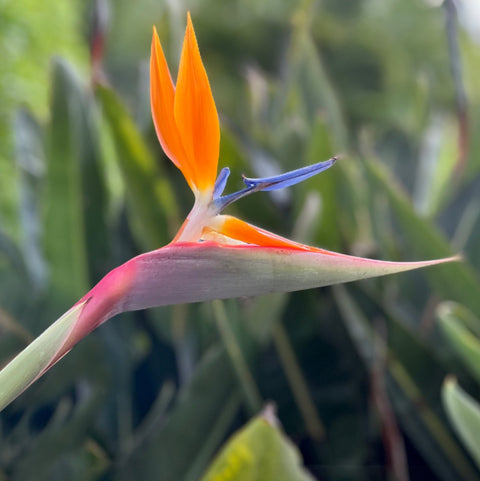








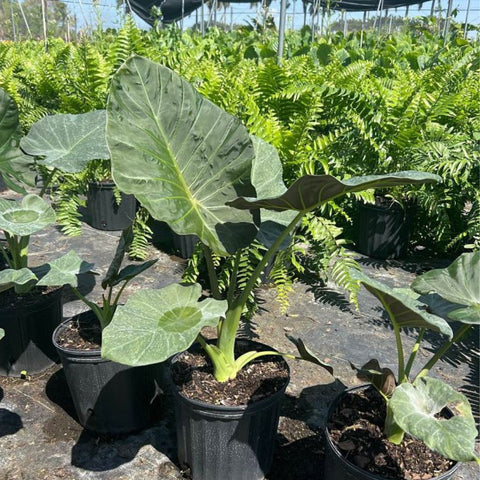


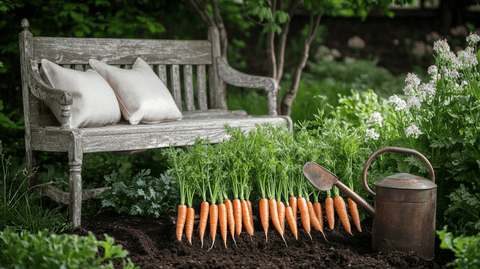


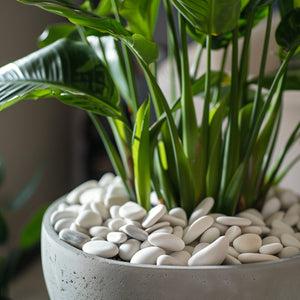

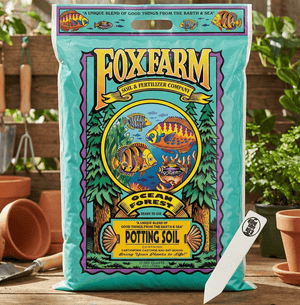




Comments (0)
There are no comments for this article. Be the first one to leave a message!